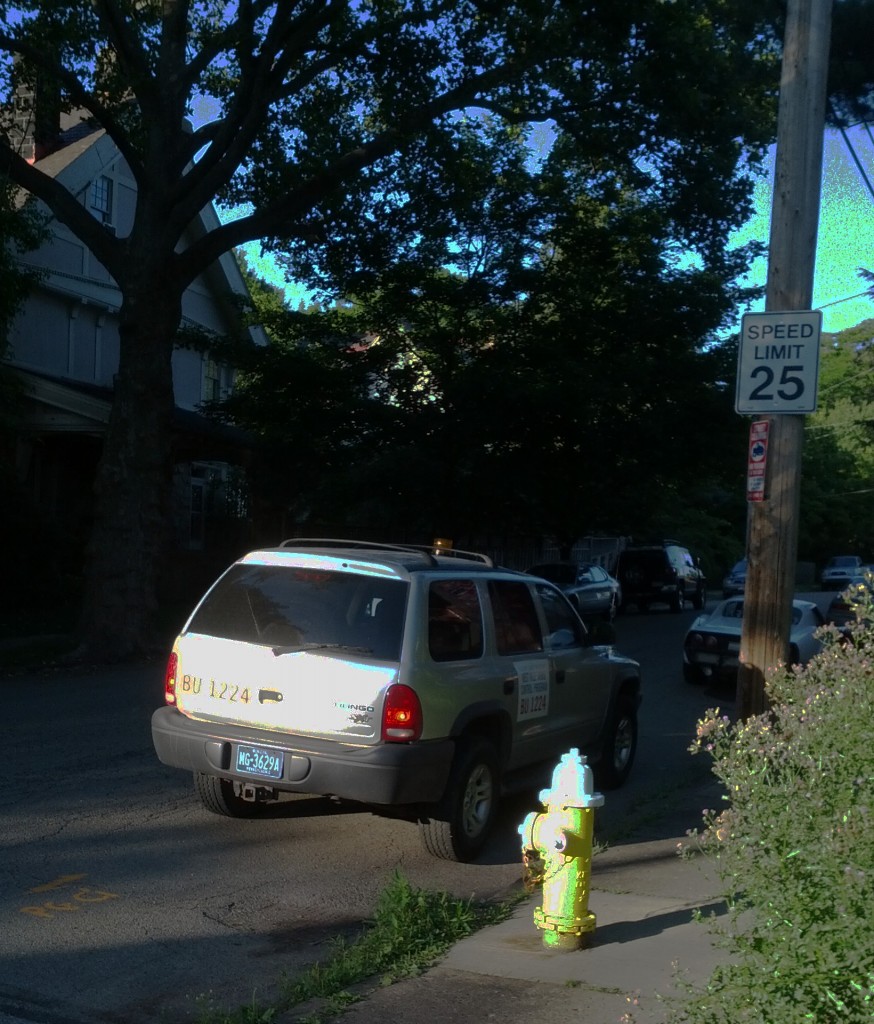When we moved to Pittsburgh, we were happy to find that there were fewer mosquitos that in New Jersey. There are also many fewer storm drains, because most of Pittsburgh is on one slope or another, and the water doesn’t stay where it lands. I suppose you don’t need to collect it in most places except at the bottom of each hill. In our neighborhood, you can go an entire block without seeing a storm drain, for instance. So, I started wondering if there was a connection: it’s easy to imagine pools of water at the bottom of each storm drain. Combine that water with leaves and junk, and you get a swill of microorgansms which the mosquito larvae eat [ 1, 2, 3, 4 ]. [Some of those links are instructions on how to grow mosquitos, and we know they’re not picky eaters. Add some organic debris to water, let it start decaying, and the larvae will eat the organic debris and the decay organisms. But you can over-feed them: according to reference 4, the water should have a “healthy organic smell”, but not smell rotten.]

To make a long story short, I wasn’t the first person to figure this out. Your local government probably has people who go around and treat storm drains to reduce mosquitos. [Money well spent, in my opinion. You could do it yourself, to your local storm drains, but it’s a lot more efficient to do it in bulk.] Interestingly, the time to treat is not when it’s frequently raining, but rather when it’s fairly dry. When it is raining, the water in the storm sewers is flowing and the mosquito larvae are being swept downstream and away. It’s only when the water stops flowing for a week that the mosquito larvae have a chance of growing up.
Now, there’s a conclusion you can draw from all this treatment activity. Storm drains must be a major source of mosquitos, or why would anyone bother treating them? This makes sense, because the larvae take about a week [ 5 ] to mature and they require water. So to have mosquitos, you need puddles of water that exist continuously for a week or more. That’s not your average puddle: it needs to be at least a few inches deep and/or shielded from the wind, or else it’ll dry up before the larvae mature. Other than water butts [ 6 ], there aren’t many big puddles in urban and suburban areas. And, while there may be small but deep puddles (like a vertical water-filled pipe) they presumably only supply small numbers of mosquitos. [Don’t forget that big ponds and streams don’t count. If there are fish, the fish will generally eat the mosquito larvae.] So, if you get rid of the larvae in water butts and storm drains, you may get rid of most of the mosquitos.
I wonder if modern technology is advanced enough to design a storm drain that will work for a century without trapping puddles of water and breeding mosquitos?
If you think about it, it makes a lot of sense to build drains that don’t breed mosquitos. Design the storm drains right, and everyone who lives in the neighborhood for the next century can spend more time outdoors. People would get more exercise, would be happier, and it probably would even save money year after year. [Less medical care, and no need to pay for these cars.] It seems like it should be easy, but perhaps it is not. Perhaps the ground moves enough over a decade or two that puddles are inevitable? Perhaps people litter too much, so there are always candy wrappers and Coke cans holding stagnant water? Or, perhaps dead leaves from trees trap enough water to breed mosquitos? [Maybe my next career should be designing storm drains. They seem interesting now: a day ago they were a completely boring topic, but now that I know a bit, they seem to have some real social and/or technological challenges…]